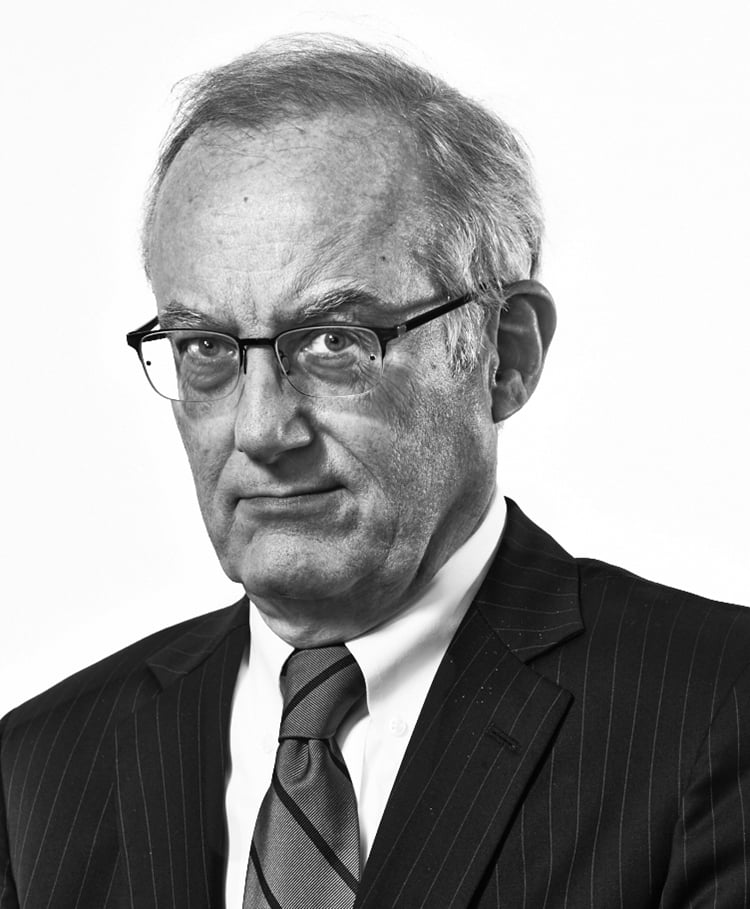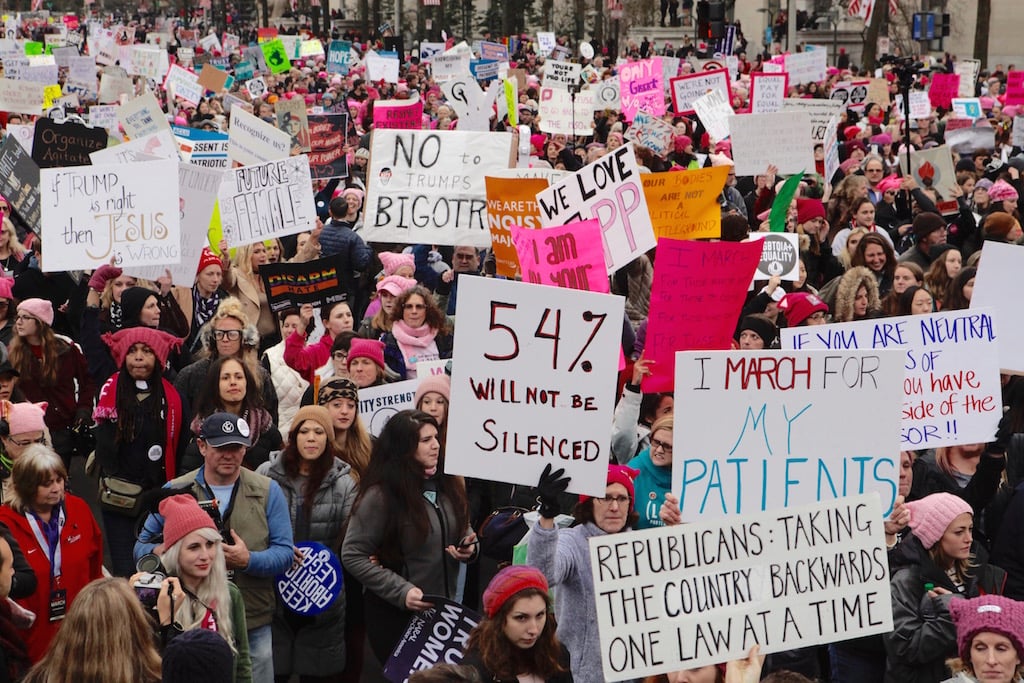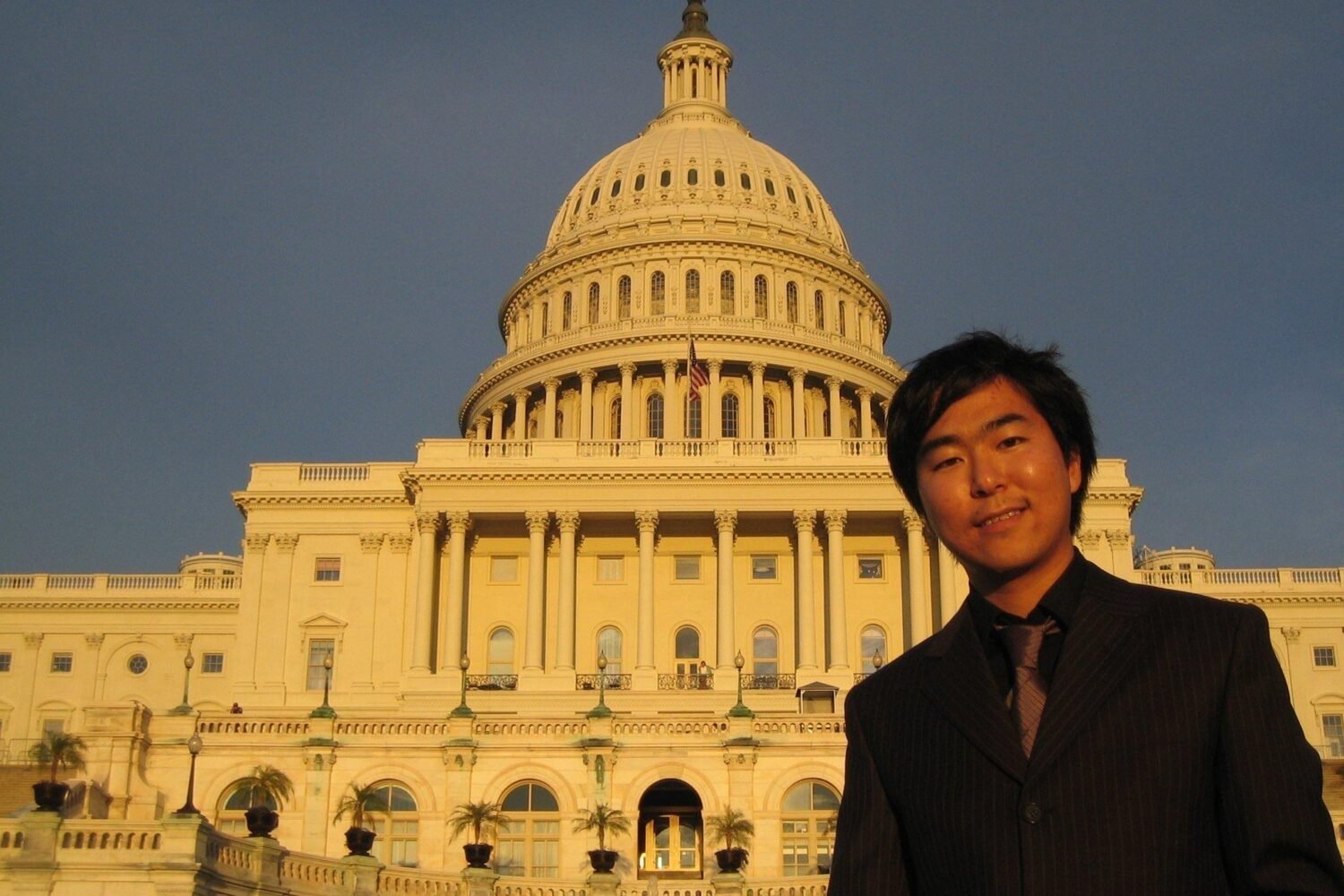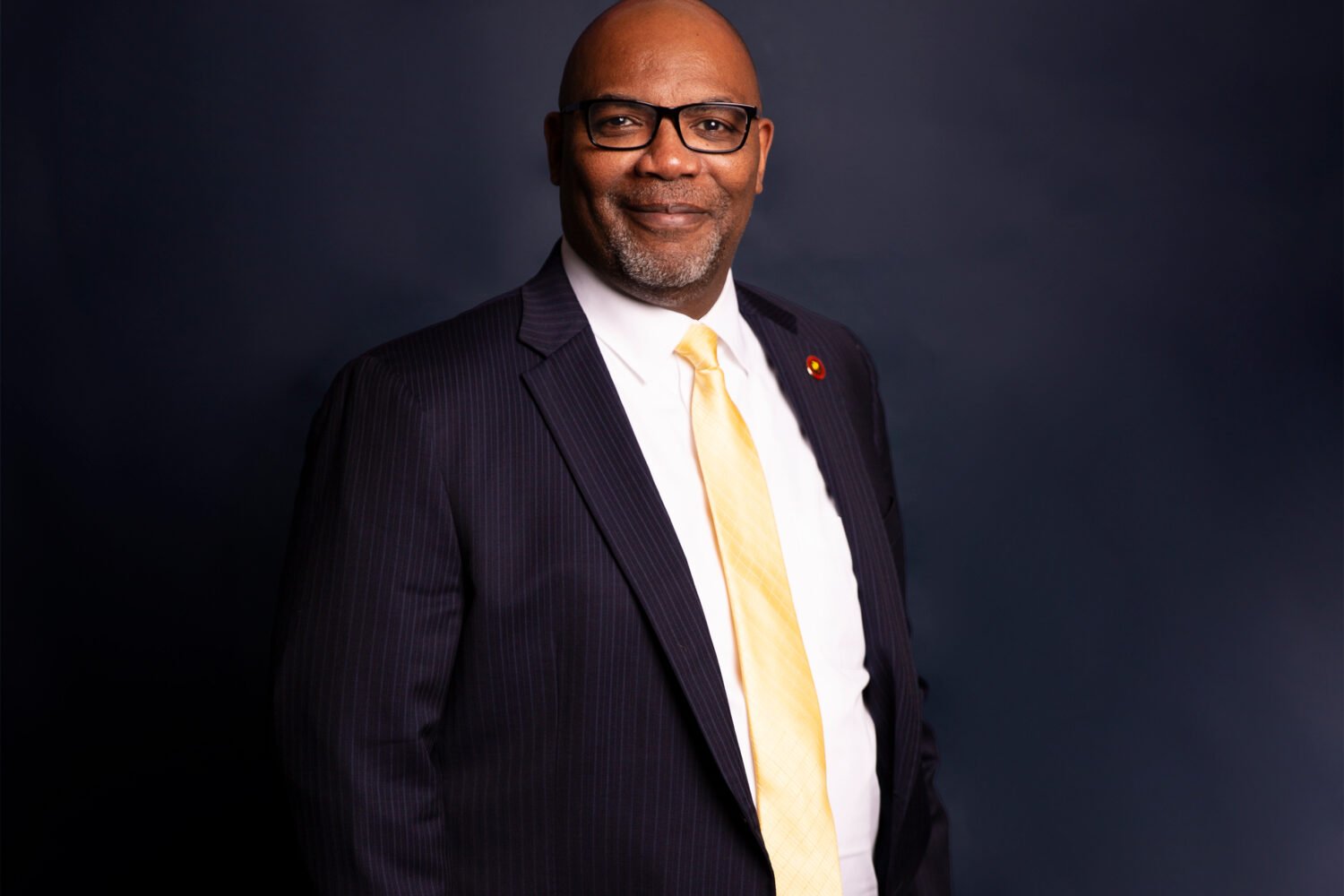They call him Dr. No, a fiscal prude who used uncertainty about Arlington’s now-defeated $333-million streetcar as a wedge to land a seat 18 months ago on the county’s uniformly Democratic board. Now, detractors say, he’s out to tame the progressive, often free-spending “Arlington Way.” Given the chance, John Vihstadt doesn’t much dispute this description. But in a conversation in his office after a morning-long budget meeting, “no” wasn’t all he had to say.
A tall, chipper Nebraskan who moved to Arlington 35 years ago after being mugged on a DC street, Vihstadt longs for the days when politics, from Capitol Hill to Columbia Pike, was a conversation. Now 63 and a lawyer with Krooth & Altman on M Street, he claims his disruption is actually aimed at restoring that former consensus. Here he talks about the evolution of the Arlington Way and getting to yes.
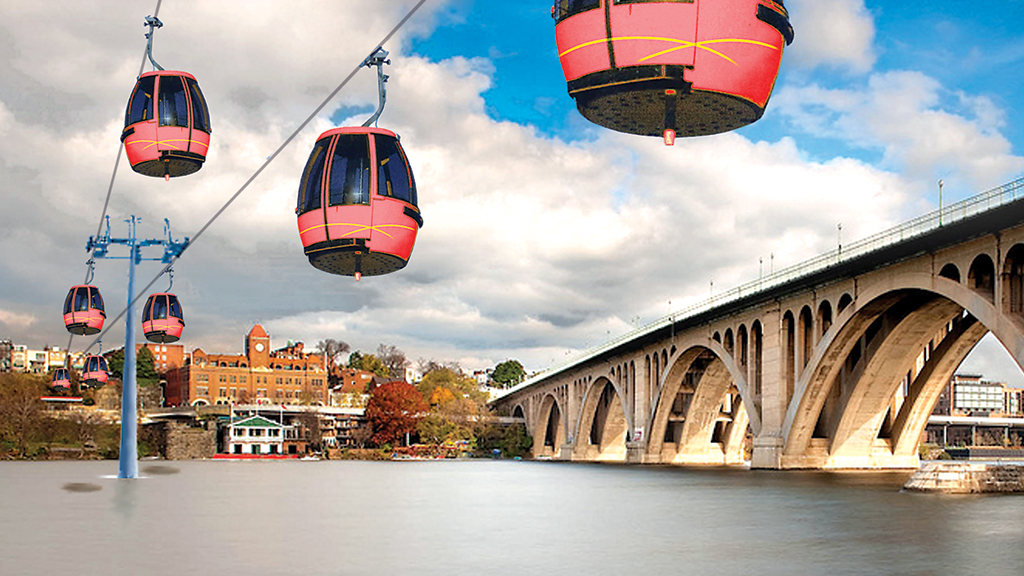
You ran for the board as an independent. Were you afraid a Republican could never be elected in what people say is one of the bluest counties in the US?
No. In the summer of ’73, at the height of Watergate, I interned for Nebraska senator Roman Hruska, the ranking Republican on the Judiciary Committee. Once or twice a week, he’d go over to Ted Kennedy’s office and just shoot the breeze. Those days are gone, but that’s where I’ve been. The other reason is that so many Democrats encouraged me to run. They said, “We need somebody who can recast the dialogue.” As an independent, I thought I could unite people from across the political spectrum.
Yet you’re known as the guy who killed the streetcar. Are you comfortable with that?
I’m comfortable with it, but it’s one-dimensional. Some voters told me, “I disagree with you on the streetcar, but I’m going to vote for you because we need to mix it up.” I stressed accountability and transparency. I campaigned for an independent auditor—someone who wasn’t beholden to the county manager. Now we have that hire. That only improves confidence in local government.
Some say you’ve questioned Arlington’s management to the extent that people now think it’s mismanaged, when on the whole it’s pretty well run.
By and large, it’s well managed. At the same time, there was a growing consensus that we were too self-congratulatory. There was too much “Aren’t we doing great?” And if there was room for improvement, it was nothing another taxpayer dollar couldn’t solve.
It wasn’t just the streetcar—it was our $1-million bus stop, the $1.6-million dog park, which people likened to a canine resort. There was Artisphere, which almost from the get-go hemorrhaged red ink. It’s an absolutely appropriate function of county government to have these facilities, but how lavish do they have to be?
So it’s a matter of scale?
We’re sometimes a victim of our own success. We are a prosperous-enough community that we can do anything we want, when we want—but not all at the same time.
But take Artisphere: You say it hemorrhaged red ink—that’s also known as arts spending.
The county has a role in promoting public art. We subsidize Signature Theatre, a world-renowned theater in Shirlington. Artisphere just ended up being, if you will, a museum too far.
After the streetcar decision, some accused affluent voters in North Arlington of turning their backs on poorer South Arlington, by denying those neighborhoods growth. Do you take that seriously?
Do I understand what people are saying? Yes. Do I agree with it? No. As a former resident of South Arlington, it bothers me when people try to make a north/south–divide argument. Three of our five county board members are now from South Arlington. However, perception is sometimes reality, and it’s a concern we have to work to disabuse people of.
Did you get any kickback from investors who bought into the Pike because of the promise of the streetcar?
I do hear from them, but I’m happy to point out that if you go down Columbia Pike, you see investment continue. Starbucks just opened at Penrose Square, Chipotle a little farther east—two chains with a reputation for doing market studies. They aren’t on Columbia Pike for show; they think they can make a buck. On George Mason Drive, Food Star, an aging grocery store in a sagging midcentury strip, is going to be replaced with market-rate apartments and a Harris Teeter. So I’m very encouraged the Pike isn’t stagnating.
But still, how do you decide? What makes something a valuable resource or not?
Well, that’s the Arlington Way. We have a community conversation about what makes sense. And we have some interesting debates. On the board, we have a lot of 5–0 votes, but we also have divided votes.
That’s what you’re there for.
[Laughs.] That’s what I’m there for. Sometimes those votes are 4–1 and I’m in the minority, and sometimes I’m in the majority.
So did the Arlington Way depend on infinitely expanding revenue?
The Arlington Way was a way of defining community engagement. But a lot of people didn’t feel they were given the time of day by the board. I was endorsed by the Republican Party and the Green Party. That made some heads spin, but it was because I made a sincere effort to listen. I didn’t take anybody for granted. I have a great relationship with a number of ethnic communities who didn’t feel anyone was competing for their vote. The construct was pull the lever for the Democratic Party and be done with it.
All of the Washington area’s governments are struggling to keep their communities affordable, particularly housing.
When we did the affordable-housing master plan last year, one of my concerns was distribution. The easy thing to do has been to put it all at the west end of Columbia Pike, where multifamily zoning is already there. But the communities there are feeling stressed. The schools are challenged to meet students’ needs despite extra resources we’re pouring into those schools. We need to look at mechanisms to put affordable housing in neighborhoods with a greater diversity of incomes. Those could be difficult conversations.
It’s not just the poor, right? It’s keeping a hold on the middle class, retaining teachers and cops.
For better or worse, the law constrains us from saying, “Okay, only people of certain occupations can occupy this building.” I do think we need to focus on those who make the least amount of money first. Whether we get to the point of having programs for the relatively better-off, that’s going to be tough.
What about young workers? People are saying, “Get my kid out of my basement!”
Maybe you get a bunk bed in the apartment. Millennials may have certain desires or expectations that are going to be a challenge to meet. You know, do they want the convenience of going to a bar or a restaurant downstairs or a lower rent?
Speaking of workers, in the new budget proposal there’s $1.5 million for economic development.
Fifteen, 20 years ago, the District was kind of down on its heels and Fairfax County might as well have been West Virginia. Now DC is reviving and attracting new business, and with the Silver Line whisking people out to Fairfax and Reston and Dulles, we’re being squeezed from both sides. We need incentives for businesses looking to locate or expand in Arlington. Some of the literature says the return on investment is diminishing, so we are trying to calibrate it so the bulk of the assistance comes after the jobs are here and there is some maturity to the employer.
Urban planners and academics would like to see more regional cooperation amid the competition. Do you talk to your counterparts in Fairfax and Montgomery?
Sure. I’m the liaison to the Northern Virginia Regional Commission and one of the liaisons to the Metropolitan Washington Council of Governments. I was just elected to be on the board of the Virginia Association of Counties.
What kind of thing do you talk about?
Schools funding, Airbnb—not looking for a one-size-fits-all approach but “What are you doing about it?” We talk about transportation, health care—
Gondolas over the Potomac!
[Laughs.] I took a lot of static for that—“John, where’s your fiscal responsibility?” It was the Georgetown business community’s idea. Arlington is putting in $35,000, which gets us a seat at the table so we can shape the initial study. And even if it comes back feasible, it’s not necessarily going to be cost-effective or something we even want to do.
So as usual, you’re skeptical. If I asked your high-school classmates back in Nebraska, “Was John Vihstadt always like this—the holdout in a 4–1 vote?” . . .
I’m going back in the fall for my 40th law-school class reunion. I don’t think too many of them would find my current position surprising. I was a student-government activist, a Model United Nations guy. County government is where I can make a difference. Some people are surprised when I tell them that my first job out of law school was as a VISTA volunteer for the Nebraska Commission on Indian Affairs. I’ve had a commitment to public service for a very long time. In Arlington Magazine recently, I was voted best politician. And I didn’t even campaign for it.

